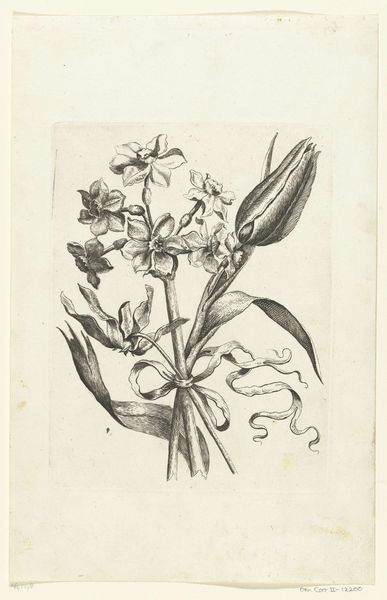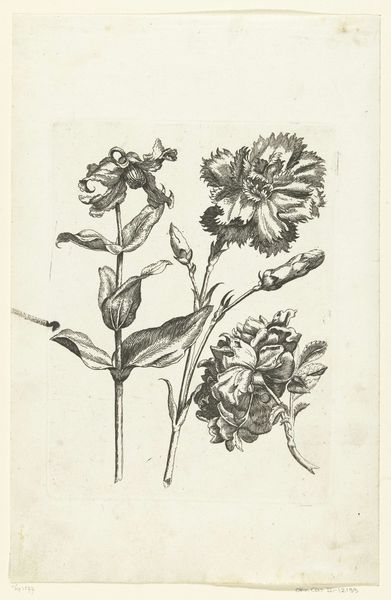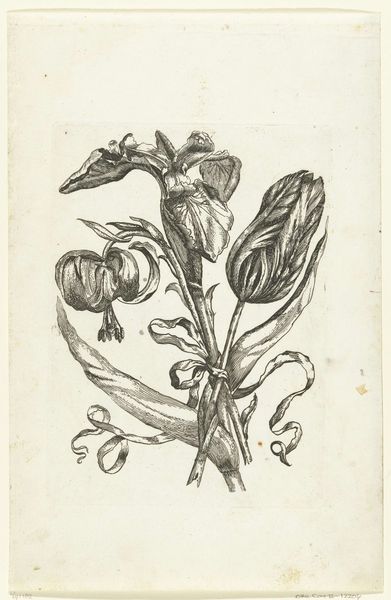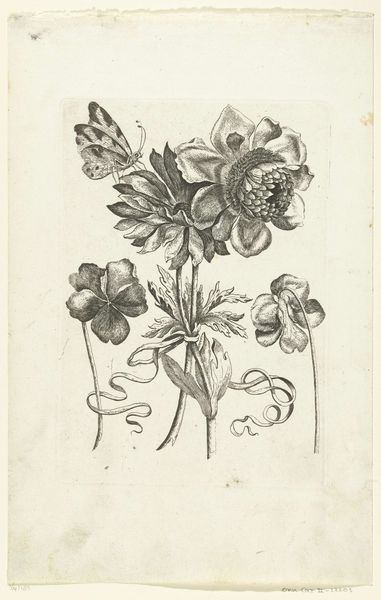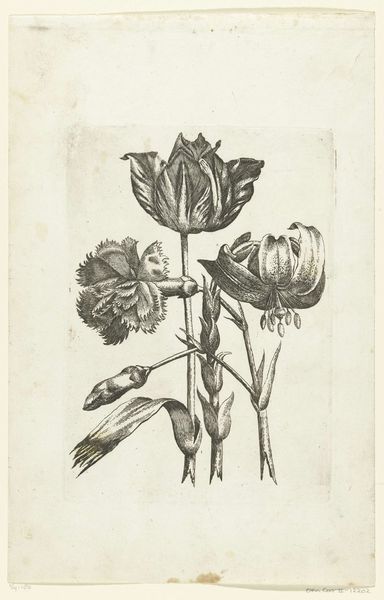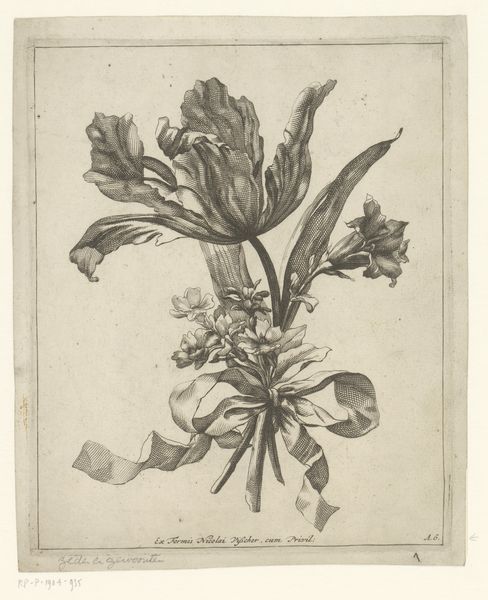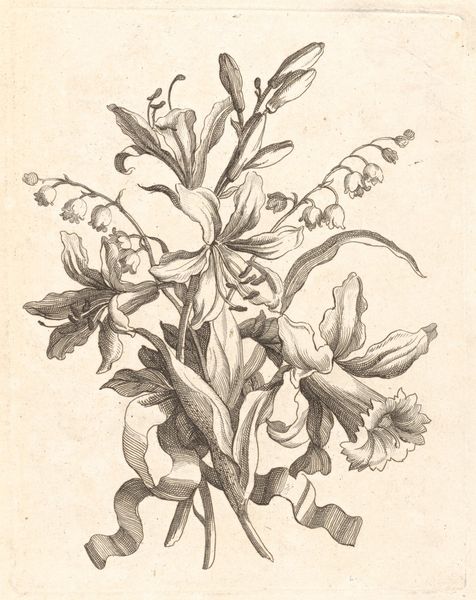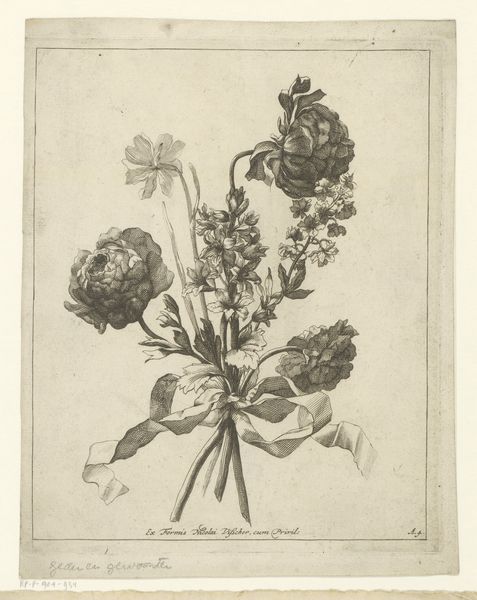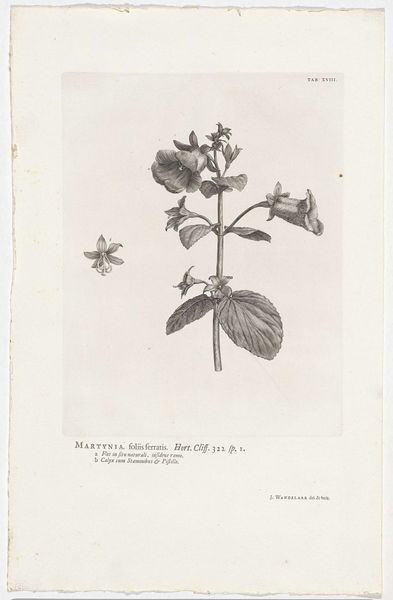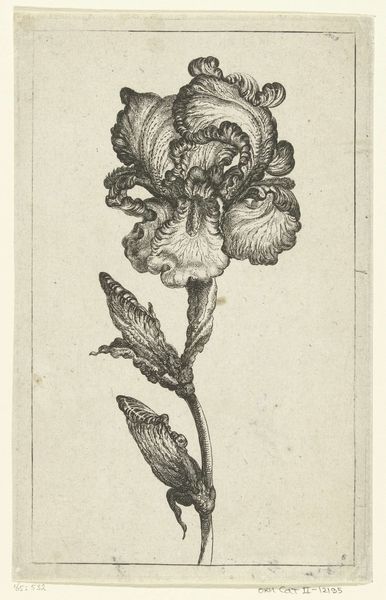
drawing, print, ink, engraving
#
drawing
#
baroque
#
pen drawing
# print
#
ink
#
engraving
Dimensions: height 182 mm, width 141 mm
Copyright: Rijks Museum: Open Domain
Curator: Look closely at this print from the Rijksmuseum. It’s called "Drie bloemen, waaronder een narcis en een anjer," which translates to "Three Flowers, including a Narcissus and a Carnation," and it dates to after 1667. While the artist remains anonymous, it’s created with engraving in ink on paper, in the style of baroque. Editor: The linear quality immediately struck me— the distinct lines and how they give form. It has a somber elegance to it. Curator: I find myself thinking about the act of printmaking in this period, the skilled labor required, and the dissemination of images this technique afforded. What’s fascinating to me is how a print like this democratizes access to botanical imagery. Editor: Right, it pulls it from elite gardens and places it in a much broader circulation. The imagery becomes, in some sense, collective, and that act transforms its potential meaning. The symbolism tied to these flowers - rebirth with the Narcissus and love or fascination with the Carnation - they become more broadly accessible social currencies. What do you make of that ribbon binding the bouquet? Curator: An excellent question. Consider the materials themselves. Paper, ink, the metal of the engraving plate—these all had complex production chains tied to extraction, trade, and labor. This ribbon, rendered only in ink, becomes a visual stand-in for a material that might itself have represented global commerce and colonial exploitation. Editor: So, what initially appears to be a delicate floral arrangement takes on a far more complicated socio-economic valence once we start factoring in production, consumption and circulation. The rendering is delicate, yet the implied processes belie that. It certainly forces us to reflect on these themes. Curator: Precisely. Looking through that lens changes how we see the image—from mere aesthetic object to a piece embedded in a much wider web of relationships. Editor: Absolutely. And for me, the intersection of natural beauty and that underlying societal infrastructure adds layers of historical narrative to what might seem like a simple bouquet. It's a really striking piece, viewed in that way.
Comments
No comments
Be the first to comment and join the conversation on the ultimate creative platform.

